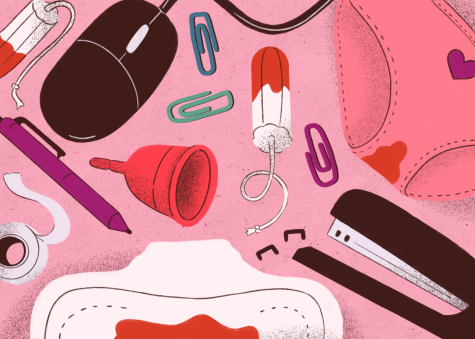Awkward: 5 ways professional workspaces can ally with menstruators
May 5, 2021

Unfortunately, you have just bled through your sweatpants on the job. Fortunately, you are working from home and you have the option to throw the pants in the washing machine and continue with your work day virtually.
As you take a short break from work to watch your pants tumble around in the soapy water, you remember the last time you bled through your pants was not so easy-going.
You were in the middle of the longest meeting you have ever been in, and your boss would not stop talking.
You were assigned the post-meeting write-up, so you felt like you could not go to the restroom or you would miss something important—even though you felt the distinct pain of menstrual cramps creeping into your uterus.
You did not realize you had bled through until you finally got to the restroom to use a pad.
How can workplaces and schools better ally with menstruators to ensure that experiences like this do not happen? The Chronicle spoke with mental health, vaginal health and sex experts to find out.
Destigmatization
Catalina Lawsin, Ph.D., a clinical health psychologist specializing in sex and relationships at her private practice, said destigmatizing menstruation is important because it is a natural process.
Nearly everyone with a vagina menstruates during their reproductive years, yet a tampon tax affects many of those people in a majority of states, and periods are still shamed in our society.
Lawsin said menstruators should be supportive of one another, which may mean helping carve out time to take restroom breaks for those that need them and dealing with people who are upset at having to talk about periods or seeing menstrual products in unisex restrooms.
Bathroom Breaks
Allowing people the chance to use the restroom can mean the difference between clean and bloody underwear.
Dr. Josh Croland, private practice OB-GYN in Peoria, Illinois, said the two big problems people in their early years of menstruation have are heavy and irregular bleeding, which means they bleed through their products or they start bleeding at unpredictable times.
Additionally, the rate at which a person needs to change a pad, tampon or menstrual cup varies with the product, depending on size and manufacturer recommendation, Croland said. Most of his patients change their choice of product one to two times per day, but if they are having a heavy cycle, they may change it more often.
Thus, having flexible bathroom breaks or allowing people to quietly excuse themselves whenever they need to use the restroom gives them the chance to change menstrual products as needed.
Compliances with Endometriosis
Croland is involved in helping patients with endometriosis obtain the paperwork to be able to have a day off or work from home during painful menstrual cycles.
Endometriosis is a condition in which the tissue that usually grows and sheds inside the uterus will grow and shed outside the uterus, meaning it can become trapped inside the body, according to the Mayo Clinic. This condition is often painful, sometimes to the point where a person cannot leave their bed to perform normal, daily tasks—let alone go to work.
Croland says there are different levels of pain, and everyone perceives pain differently. Being flexible with students and employees on days when they cannot work in-person shows them that their body and their well-being is important to you, whether their pain level is a nuisance or debilitating.
Self-Education
While knowledge on conditions like endometriosis or irregular bleeding can be important to maintaining a healthy work or school environment, knowing the basics can be just as supportive to menstruators.
Croland said there are a few basics everyone should know: the average age menstruators start having their period, different products that can be used, why periods occur biologically, how to use a pad or tampon and how long someone should use a menstrual product before changing it.
This knowledge can help you gauge ways you can be helpful, especially if you are teaching pre-teens or teenagers because there may be an instance in which you need to educate them on the fly or provide the right products if they do not have any.
Normalization
Jennifer Litner, sexologist and founder of Embrace Sexual Wellness, said menstruation is something society needs to shame less and understand more because it is just another natural occurrence in people’s bodies. Holding a tampon should be like holding a piece of paper, she said.
Though similar to destigmatization, the two steps are not the same. To destigmatize is to remove shame from the subject, whereas to normalize is to make standard. In other words, it should not just be okay to discuss menstruation-based needs—it should be customary.
“Menstruation is a natural part of human life, and it’s not really any different than having itchy or watery eyes when it’s allergy season,” Litner said. “It’s a cyclical type of experience that happens, and I don’t think it’s something that we should have to hide.”







